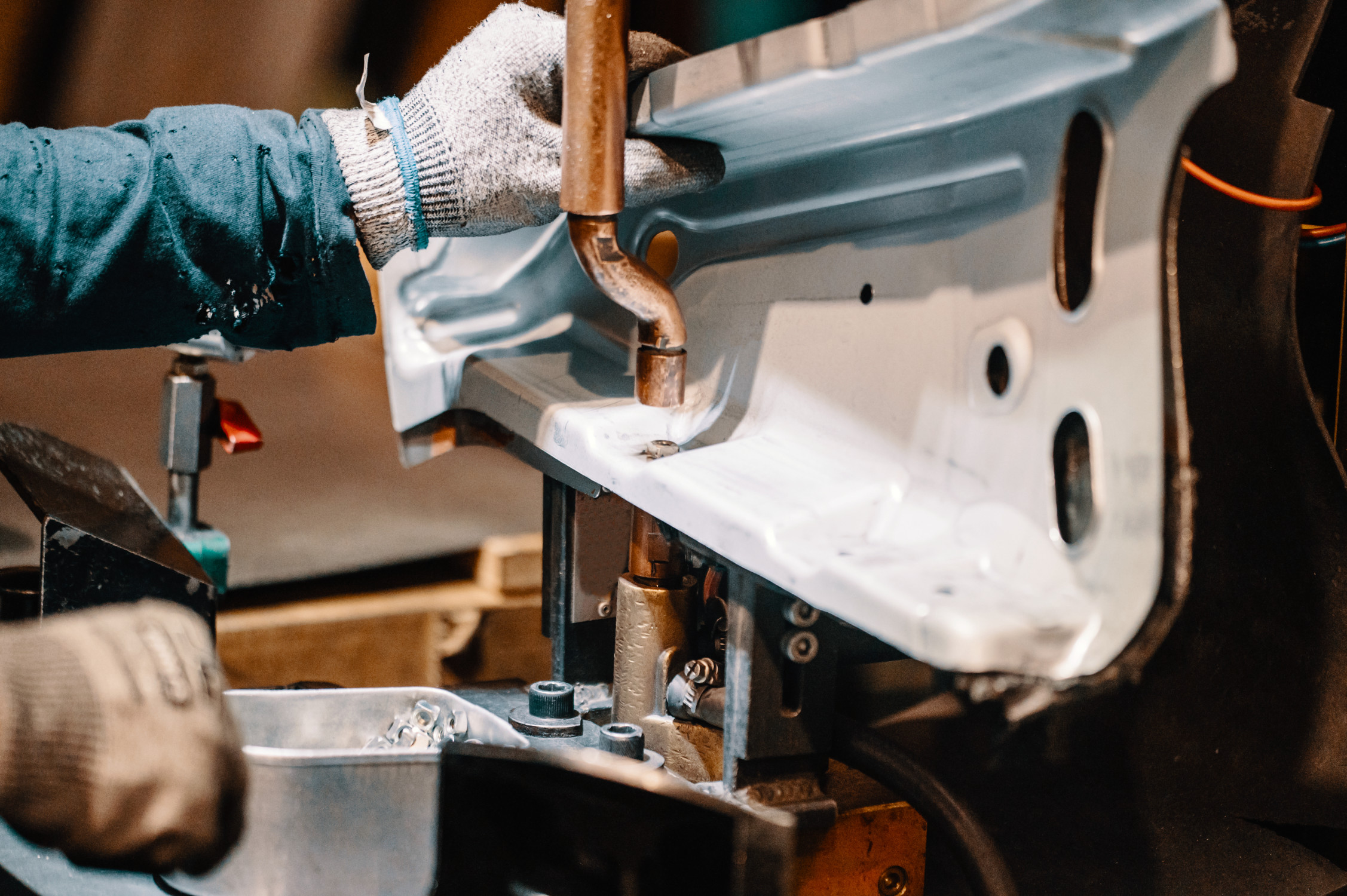Welding is a potentially hazardous workplace occupation. Annually, almost half a million welders in the United States are exposed to health and safety risks. From resistance welding and spot welding to flash welding and butt welding, safety measures and health protocols are put into place to ensure the safety of these workers.
However, when these safety protocols are ignored or not followed fully, the risk of accident or injury goes up dramatically. The list of potential dangers is extensive: electrocution, asphyxiation, and fire- and electrical-related risks to name a few. At Tuffaloy, we believe in a safe and productive workplace. So, we have compiled a list of helpful reminders to keep the workplace safe.
Here are the 7 most commonly overlooked safety protocols for welders:
1. Wear The Proper Gear
The gear isn’t simply a suggestion—it has been designed and recommended to afford the greatest level of safety in the workplace. Proper gear includes:
Ear Protection:
In order to prevent damage to hearing, ear protection should be used in the workplace, particularly if the noise average is above 85 dB for more than eight continuous hours. Ear protection can include earplugs or earmuffs as long as they are designed with welders in mind.
Eye and Face Protection:
Safety glasses or goggles that comply with the ANSI standard are necessary to prevent damage to the eyes or vision.
Heat Protection:
Welders are subjected to a great deal of heat. Therefore, flame-resistant outerwear, such as gloves, are encouraged.
Respiratory Protective Equipment (RPE):
Respirators, as well as fume extraction systems, help to protect welders from exposure to harmful fumes that are present in the work environment.
Proper Footwear:
Every company has its own rules here. But steel-toed shoes are often recommended, preferably leather with coverage above the ankle for the best protection. Shoes that are heat-resistant are a plus, but not necessary for resistance welding.
Safety Harness:
A safety harness should always be worn if the welder is working above floor level.
2. Cover-Up Completely
Once the welder has the proper gear, it is essential that it be worn properly, ensuring that all bare skin and unprotective clothing are covered. For example, as noted, leather shoes that rise above the ankle are preferred for safety reasons. Pant legs should drop down over the shoes to ensure that there is no bare or unprotected part of the leg that could be exposed to injury.
3. Read The Workplace Manual
Every job should offer its own safety guidelines along with or in addition to OSHA safety standards. This should include safety, communication, and general housekeeping protocols. All welders should review the guidelines prior to work and on a regular basis thereafter in order to keep health and safety at the forefront of their concerns.
4. Carry Out Required Pre-checks And Post-checks
- Turn off all equipment when not in use
- Carry out a full visual check of equipment prior to each use.
- Use only well-maintained equipment. Do not begin work if there is any question with regard to the maintenance and safety of the equipment.
5. Clear The Area Of Clutter
Never weld in an area where sparks can catch and cause fire. In the event that the object to be welded can’t be moved, then move all possible fire hazards to a safe place outside a thirty-foot radius of the welding area. This includes flammable dust, gas, or liquid vapors. Plus, make sure that there is always a fire extinguisher (Class ABC ) nearby. In the event there is no fire extinguisher, make sure that there are fire hoses or, at least, buckets of sand or other fire suppression equipment at hand.
6. Take Precautions Against Electrocution
Electrical shocks can kill. Do not touch any live electrical parts and make sure that all equipment is properly grounded and insulated. Make sure to turn off all power when the equipment is not in use. Additionally, welders should wear the proper glove to protect themselves from electrical shock. The welder operates at low voltage which is safe. Safety must be taken in case of equipment failure where high voltage can come through. If this happens, the ground is imperitive to protect the operator.
7. Keep Learning
Even the most skilled welder still has things that they can learn, or simply things of which they might be reminded that they hadn’t considered in a while. Never give up on the idea of learning the craft and the trade of welding. There are new techniques and innovations in equipment happening on a regular basis. Remaining open to new ideas is the opportunity for the welder to improve their skills, stay healthy and safe, and continue working in a professional environment that is beneficial to both the employer and the working staff.
We release helpful content for the welding industry every week. Stay up to date by following us on LinkedIn, Facebook, and Twitter, as well as coming back to visit our website.



